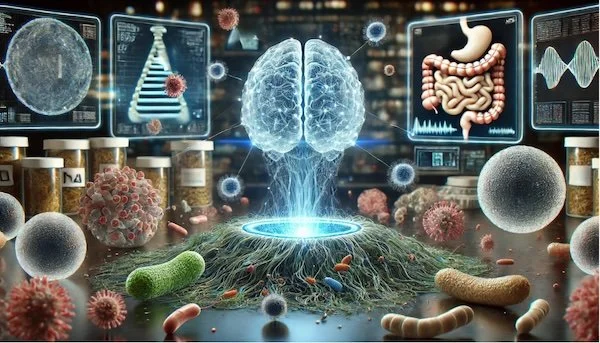AI in the Gut: Miracle Cure or Microbial Mirage?
Artificial Intelligence is eating the world and now it’s eyeing your gut. Machine learning (ML) has stormed into microbiome research, promising tailor-made probiotics, precision diets, and predictive diagnostics that could transform medicine. The pitch is seductive: AI will read your microbes like a crystal ball and tell you what disease lurks around the corner or what yogurt will save your colon.
But here’s the dirty truth nobody wants to admit. For every splashy paper claiming AI cracked the microbiome code, there are sloppy pipelines, data leaks, and inflated metrics hiding under the hood. In fact, nearly nine out of ten microbiome studies using machine learning can’t back up their own accuracy claims (Topçuoğlu et al., mBio 2020).
The Promise: AI as the Gut Whisperer
When done right, ML could change everything. Imagine algorithms that:
Spot disease before symptoms hit by recognizing microbial “fingerprints.”
Predict drug side effects by modeling gut metabolism with the precision of the liver.
Design precision probiotics and prebiotics that actually work for you, not just the average patient.
3D print personalized microbiome therapeutics matched to your unique microbial circuitry.
This isn’t science fiction. Platforms like DrugBug are already screening which gut bacteria will metabolize your meds. Deep learning models can forecast how prebiotics will shift your microbiome before you even swallow them. Pharma is drooling. Investors are throwing money at the next “ChatGPT for your gut.”
The Problem: Garbage In, Garbage Out
Here’s the catch, microbiome data is a statistical nightmare. It’s high-dimensional, compositional, sparse, riddled with batch effects, and notoriously context-dependent. Imagine trying to train AI to read a book where half the pages are blank, the chapters are shuffled, and the font keeps changing size.
And researchers? Too many are cutting corners:
Test set leakage: Letting the model “peek” at the answers.
Test set omission: Never even testing on new data.
Overhyped AUC scores: Publishing accuracy metrics that collapse under real-world validation.
Sample size paradox: Larger studies often report worse accuracy, flipping ML logic on its head.
The result? A literature littered with exaggerated claims that the microbiome can “diagnose anything.”
Spoiler, it can’t.
Not yet.
Worst-Case Scenarios Nobody Talks About
If we don’t fix these flaws, AI in microbiome research could backfire spectacularly:
Snake-Oil Probiotics Powered by AI: Startups will flood the market with “AI-designed” probiotics that are more branding than biology. Consumers will lose trust before the real breakthroughs arrive.
Algorithmic Misdiagnosis: Flawed ML models could tell patients they’re at risk for cancer or IBD when they’re not, or worse, miss the actual disease. Imagine the lawsuits.
Widening Health Gaps: Wealthy patients will get bespoke microbial therapies, while underserved populations get left behind. AI could make microbiome medicine more elitist, not more inclusive.
Data Breaches of Your Gut Profile: Microbial data reveals diet, lifestyle, even geographic origin. What happens when insurers or employers start mining your microbiome?
A Clinical Reproducibility Crisis: If AI-driven microbiome tests hit the clinic without rigorous standards, we risk a meltdown on par with the replication crisis in psychology, only this time, patients’ health is on the line.
The Takeaway: Hype Meets Reality
AI and ML are the sharpest tools we’ve ever aimed at the microbiome. They could transform diagnostics, reshape nutrition, and supercharge therapeutics. But unless the field cleans up its act, standardized pipelines, explainable models, rigorous test sets, these tools will do more harm than good.
The question isn’t “Can AI save your gut?”
It’s “Will we let the hype kill the science before it ever does?”
